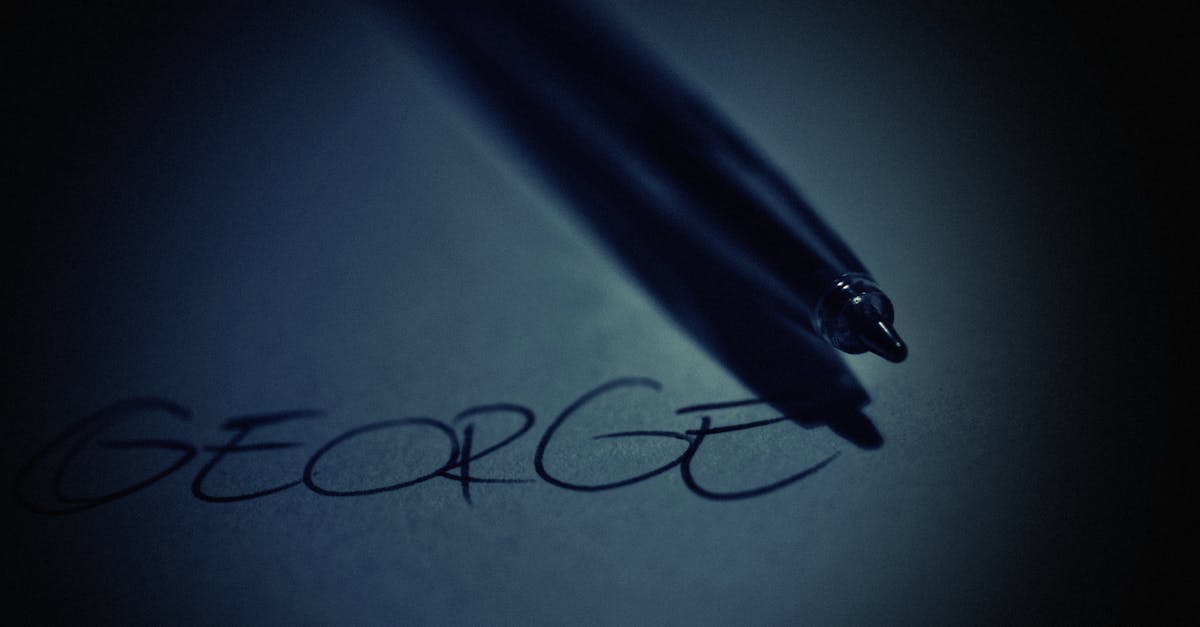How much of Star Wars did George Lucas actually write?

I got into a semi-argument with a friend recently regarding how much credit to give George Lucas for Star Wars. She was commenting how he's an awful director and that's why the new Star Wars trilogy was so terrible and I countered Well I've read the script to the original Star Wars and that at least was spectacular, he's a great writer, to which she replied that they had done a major rewrite of his original script for A New Hope because the original script was so bad. Is that true?
And I already know other people wrote the screenplays to The Empire Strikes Back and Return of the Jedi, so now I'm starting to wonder how much of it Lucas himself actually came up with? I want to believe in Lucas but I need to see some evidence!
Best Answer
At the risk of giving an opinion-based answer, your friend is mostly right. Lucas began by writing a synopsis of the story in early 1973, then started working on a rough draft of a script the next year. Lucas' first draft was a mess: the story was confusing, far too long, and incredibly boring; the characters were terrible and bland; the dialogue was leaden and stilted; etc. He eventually produced at least 6 versions of the script (first/rough draft, second draft, third draft, then 3 different versions of the fourth draft), and he had lots of help during the revision process.
In Lucas' own words in an article from Mediascene Prevue #42, 1980:
I think [I came up with the title The Star Wars before the story]. When I made the deal, I had to give it a name. I had been making notes, doing research over the years, but it wasn’t until I finished American Graffiti in ’73 that I actually started writing it. My original 14-page treatment didn’t bear much relationship to the final production, though.
From a site on the development of Star Wars:
[In the first synopsis,] the story was very confusing and the spelling was horrible, since Lucas had never learned proper spelling or punctuation. His agent and lawyer were puzzled and did not understand the story, and it was actually due to the popularity of American Graffiti that they eventually managed to sell the film to Twentieth Century Fox—after it had been rejected by both United Artists and Universal Pictures.
A rough [draft] was completed one year later in May 1974, and still carried the title The Star Wars. It was the first of four major drafts and several revised versions... When the screenplay draft was finished, however, Lucas still thought it was a mess.
The Adventures of the Starkiller (Episode One): “The Star Wars” was the title of Lucas’s second draft which was delivered on January 28, 1975. This was a more character-driven story with more character development, which was important since Lucas wanted the film to make an emotional impact... He let his friends (among them director Francis Ford Coppola) read the scripts and tape-recorded their comments in order to get some advice. However, the suggestions from his wife Marcia (a film editor who later won an Oscar for Star Wars) were the ones he took most seriously, even though her criticism sometimes made him angry.
The third [draft] which was finished on August 1, 1975 was called The Star Wars: From the Adventures of Luke Starkiller, and by this time, most of the plot was established. Lucas felt quite comfortable with his characters, but he still thought that the dialogue needed improvement, and was very concerned that his story might never make it to the silver screen.
Lucas’s revised fourth draft was the one which was used when filming began in Tunisia on March 25, 1976. A slightly edited version of this draft, entitled Star Wars Episode IV: A New Hope—From the Journal of the Whills, was published in 1979 as the official screenplay of the film (the final editing of that public version [of the fourth draft]—erroneously dated to January 15, 1976—was done after Star Wars went into production, probably after the film’s May 1977 release).
Lucas had consulted his co-writers from American Graffiti (Willard Huyck and Gloria Katz) to sharpen the dialogue, which he felt lacked humour and bounce, and although he rejected most of what they came up with, their new ideas gave Lucas renewed confidence in his work.
Regarding A New Hope:
Lucas later commented on the contributions of Huyck and Katz, in the book Star Wars: The Annotated Screenplays:
Dialogue has never been my strong point, and so I talked to Willard and Gloria and asked them to do a quick dialogue polish. I gave them the fourth draft of the script, and they just improved the dialogue where they felt they could make a contribution. Then I took their changes, and sometimes I rewrote some of their lines. Some of their dialogue of course changed again when we started shooting. Some of it survived; some of it didn’t. They did about thirty percent of the dialogue.
The cast agreed with Lucas' assessment of his dialogue-related shortcomings. Carrie Fisher, Mark Hammil, and others frequently teased Lucas about this, and it is touched upon in audio commentary tracks and making-of documentaries. Harrison Ford was particularly outspoken, and his difficulties with Lucas' dialogue led him to improvise many of his lines in the series.
Ford famously told George Lucas, concerning the clunky dialogue in "Star Wars," "George, you can type this shit, but you sure as hell can't say it."
Harrison Ford later confirmed this:
"I told George: 'You can't say that stuff. You can only type it.'"
Regarding Ford's improvisation:
Mark Hamill, for one, was amazed at the dedication Ford put into each and every line, stating, "He'd written things in the margins, saying the same thing basically, but his way. He had an amazing way of keeping the meaning but doing it in a really unique way for his character."
A George Lucas quote from Denise Worrell’s book Icons (1989):
There are four or five scripts for Star Wars, and you can see as you flip through them where certain ideas germinated and how the story developed. There was never a script completed that had the entire story as it exists now. But by the time I finished the first Star Wars, the basic ideas and plots for Empire and Jedi were also done. As the stories unfolded, I would take certain ideas and save them; I’d put them aside in notebooks. As I was writing Star Wars, I kept taking out all the good parts, and I just kept telling myself I would make other movies someday. It was a mind trip I laid on myself to get me through the script. I just kept taking out stuff, and finally with Star Wars I felt I had one little incident that introduced the characters. So for the last six years [1977-1983] I’ve been trying to get rid of all the ideas I generated and felt so bad about throwing out in the first place.
Regarding Empire Strikes Back:
George Lucas quote from Star Wars: The Annotated Screenplays:
Writing has never been something I have enjoyed, and so, ultimately, on the second film I hired Leigh Brackett. Unfortunately, it didn’t work out; she turned in the first draft, and then she passed away. I didn’t like the first script, but I gave Leigh credit because I liked her a lot. She was sick at the time she wrote the script, and she really tried her best. During the story conferences I had with Leigh, my thoughts weren’t fully formed and I felt that her script went in a completely different direction.
A George Lucas quote from Alan Arnold’s book Once Upon A Galaxy
I hired Leigh Brackett to write the screenplay, but tragically she died right after completing the first draft. Faced with the situation that somebody had to step in and do a rewrite, I was forced to write the second draft of this screenplay. But I found it much easier than I’d expected, almost enjoyable. It still took me three months to do, but that’s a lot different from two years. I also had the advantage of Larry Kasdan coming in later to do a rewrite and fix it up.
Lawrence Kasdan quote from Cinefantastique Vol. 28:
What I worked on was a draft of the script George had written, based on the story George had given to Leigh [Brackett]. I don’t know what of Leigh’s draft survived into the draft George wrote. What George handed me was a very rough first draft, really somewhere between an outline and a first draft. The structure of the story was all there – it was the skeleton for a movie. What was needed was the flesh and the muscle.”
Regarding Return of the Jedi (originally titled "Return of the Jedi" in early pre-production, retitled "Revenge of the Jedi" just before filming began, kept this title until 4 months before the film was released, when Lucas finally, officially changed the title back to "Return of the Jedi"):
Lawrence Kasdan quote from Starlog #51 (October 1981):
[Kasdan is working from a] very rough first draft [script that George Lucas wrote. Kasdan will have to write Revenge of the Jedi quickly, since it begins shooting in January.] It’s a similar situation to the terrible time problem we had on Empire, but I think that this time I’ll have a much freer hand, because the Jedi screenplay that George gave me isn’t nearly as far along as Empire’s was.
Robert Watts quote from The Making of Return of the Jedi:
The screenplay is the blueprint for everything, and without it you tend to flounder a bit. We’d had indications, we’d had discussions, we’d had drafts, but the final script did come very, very late.
The drafts of the A New Hope script:
Here is the first (rough) draft, from the invaluable Jedi Bendu Script Site.
Here is the second draft, from the same site.
Here is the third draft, from the same site.
Fourth draft, same site.
Revised fourth draft, same site.
Public version of fourth draft, same site.
Analyses and summaries of the drafts/scripts:
The Connoisseur’s Guide to the Scripts of the Star Wars Saga, same site.
The Development of Star Wars, As Seen Through the Scripts by George Lucas, from site referred to earlier.
The Jedi Bendu Script Site also has articles on the draft variations for Empire Strikes Back and Return of the Jedi.
Some of the more glaring differences between the early drafts of the script for A New Hope and the finished movie(s):
First synopsis:
Interestingly, the first line of the synopsis is:
This is the story of Mace Windu, a revered Jedi Bendu of Ophuchi who was related to Usby C.J. Thape, Padawaan learner of the famed Jedi.
Lucas explained that he originally intended for the events of the film to be presented as though they were recorded in a journal ("The Journal of the Whills") by an uninvolved narrator - apparently, this narrator was supposed to be a Jedi named Mace Windu.
Lucas' own words regarding the "Journal of the Whills" concept:
Originally, I was trying to have the story be told by somebody else; there was somebody watching this whole story and recording it, somebody probably wiser than the mortal players in the actual events. I eventually dropped this idea, and the concepts behind the Whills turned into the Force. But the Whills became part of this massive amount of notes, quotes, background information that I used for the scripts; the stories were actually taken from the ‘Journal of the Whills’
First Draft:
There is a Luke Skywalker, but he is nothing like our Luke Skywalker - he is a Jedi General who looks to be in his 60's but is actually much older - so we'll ignore him completely in this summary. The character most like the one we know as Luke Skywalker was originally named Annikin Starkiller.
The heroes are Kane Starkiller and his sons Annikin and Deak. Kane is a Jedi, one of the last, and is training his sons to become Jedi.
Vader, obviously, is not Annikin, nor is he the father of the Annikin/Luke character.
Instead of a mask and helmet, Vader's face is covered by a black silk scarf.
Vader is a general, not a Jedi (in fact, he doesn't even believe that Jedi exist), wears a normal uniform, and dies aboard the Death Star
Almost everyone uses a lightsaber - even Stormtroopers. Lightsabers are at least as common as blasters (imagine how much less awesome Jedi would be if their unique and iconic weapons weren't unique or iconic at all).
What we know as the Dark Side of the Force is instead called the "Bogan Force" or "para-Force"; what we know as the Light Side of the Force is called the "Ashla Force"; what we know as the Force is called the "Force of Others". The Jedi are referred to as "Jedi Bendu". The standard Jedi Bendu way of saying goodbye is "May the Force of Others be with you".
The first movie focuses on Kane Starkiller, the leader of the Alliance, sending his sons on a mission to retrieve the "Kiber Crystal" from a man named Owen Lars (who isn't Annikin's/Luke's uncle). The Kiber Crystal is a diamond-like gem that can magnify either side of the Force a hundredfold. Kane intends to use it to destroy the Death Star.
Han Solo was originally a lizard-like creature with gills, an idea Lucas fortunately dropped by the time he wrote the second draft.
Chewbacca wears clothes - specifically, a flak jacket and brown cargo shorts (as well as his trademark bandoliers.
Leia is 14, and instead of being Annikin/Luke's sister, she falls in love with him. Biggs is her little brother.
Grande Mouff Tarkin isn't a bad guy, nor an Imperial official, just a wimp.
The description of Wookiees (spelled "Wookees" in the first draft) is worth mentioning: They are huge, gray, and furry, with large yellow eyes. They resemble giant bush-babies or lemurs. They can squawk, jabber, yell, scream, laugh, screech, chatter, and cheer. They hug and kiss to show affection, and kneel and bow to show respect.
Second Draft:
In the second draft, Luke is much more like the Luke we know. Here is how the Jedi Bendu site's summary of the second draft describes the manner in which we first encounter Luke:
The two droids... find the Moisture Farm of Owen Lars. The farm houses Owen’s wife, Beru, and Lars’ sixteen year old daughter, Leia. Also living there are Luke Starkiller, who is short and a little chubby, and Luke’s younger brothers Biggs and Windy Starkiller. Luke likes to study fossils in the Dune Sea when he is not practicing with his lazersword ["lazersword" was Lucas' unimaginative original name for the lightsaber].
Luke's father is dead.
Luke and his mother lived with Owen Lars, Owen's wife Beru, and their daughter Leia on the Lars family's moisture farm; Luke's mother died some time later. Leia therefore grew up living with Luke, who is about 2 years older than her, and she has a crush on him. She is clearly not a princess, nor is she his birth sister.
In this draft, Owen has enthusiastically tried to teach Luke to become a warrior (presumably of the Jedi variety), but Luke shows little interest in anything other than lazersword practice and digging for fossils. This is effectively the opposite of the Owen/Luke dynamic we see in the finished movie.
In the second draft, instead of Annikin and Deak using the Kiber Crystal to destroy the Death Star (the version of events in the first draft), Luke flies his attack ship towards a familiar exhaust port on the battle station's surface. Vader pursues him in a fighter craft and is about to fire his weapons at Luke's ship, when out of nowhere, Han Solo's ship appears and blasts Vader's fighter out of the battle. Luke focuses on his task, steering his ship towards the small exhaust hole ahead, then... C-3PO FIRES THE TORPEDOES INTO THE PORT, DESTROYING THE DEATH STAR. You read that right - the torpedo that destroys the Death Star is fired not by Luke himself, but by his gunner - C-3PO.
Obi Wan/Ben Kenobi does not appear in either the first or the second draft. He was a later addition. Even after he was added, he was supposed to survive the first two films. When filming for A New Hope was more than half over, Lucas decided to kill him off to add a sense of drama. Since Obi Wan was supposed to be the one who continued Luke's training in the second film, now that he was dead Lucas needed someone else to train Luke. This is how Yoda came about. Incidentally, Sir Alec Guinness was less than happy about suddenly finding out that the script had been changed and his character was being killed off.
Although this applies to The Empire Strikes Back, not A New Hope, I have to mention it here: Yoda was originally named "Minch". He was fairly harsh, and refused to let Luke eat until his training was complete.
Lucas claims that by the time A New Hope was released, the idea that Vader is Luke's father was set in stone. The early drafts of the Empire Strikes Back script, however, seem to contradict this. It seems more likely that this idea only occurred to Lucas well after filming for Empire had begun. The same may be true of the idea that Luke and Leia are brother and sister.
Pictures about "How much of Star Wars did George Lucas actually write?"



Did George Lucas write the script for Star Wars?
The Star Wars: Rough Draft was written as a full rough draft by George Lucas in May 1974. The script was begun in the winter of 1973 as an expansion of the original The Star Wars: Story Synopsis.Did George Lucas write and direct Star Wars A New Hope?
Star Wars (retroactively titled Star Wars: Episode IV \u2013 A New Hope) is a 1977 American epic space opera film written and directed by George Lucas, produced by Lucasfilm and distributed by 20th Century Fox.Did George Lucas write the last 3 Star Wars?
George Lucas provided story material for the seventh Star Wars saga film, which was released on December 18, 2015, titled Star Wars: Episode VII The Force Awakens. Disney, however, ultimately chose not to use Lucas's story ideas in the final film.STAR WARS (1977): How It Was Written
More answers regarding how much of Star Wars did George Lucas actually write?
Answer 2
George Lucas wrote the story treatment for the entire saga alone and the script for the first film (relabeled A New Hope) was a solo effort.
You will find Wookieepediaa far more reliable source than other wiki pages, as the information is highly scrutinized and verified by reliable sources.
According to the New Hope page:
• In January 1973 Lucas began work on (The Adventures of Luke Starkiller), and by May had prepared a 14-page story outline for distribution among film studios.
• Lucas finished a draft of the screenplay in May 1974. As the draft developed, the characters evolved significantly.
• The completed script was too long for one movie; however, Lucas refused to condense it. Instead, he expanded the first third of it into one movie and left the rest for two future films, effectively creating the original Star Wars trilogy.
Regarding The Empire Strikes Back
• Lucas hired screenwriter Leigh Brackett to write a screenplay based on his story treatment. Brackett finished the first draft on February 23, 1978 but she died soon afterward. According to Lucas, he didn't like the direction in which her screenplay went. Without a writer to fix it, he was forced to write the second draft himself throughout March. Major plot changes were made compared to the first draft and the storyline that is in the film was formed in this draft. One of the most notable changes was making Vader Luke's father. When Lawrence Kasdan finished writing the screenplay for Raiders of the Lost Ark he was hired to rewrite and improve Lucas' draft. He wrote a few more drafts before the script conference was held in November between George Lucas, Lawrence Kasdan, Irvin Kershner and Gary Kurtz. After some additional input, the shooting script was finally formed. Minor changes to dialogues came from Kershner and actors throughout the filming and were mostly approved by Lucas.
• For Return of the Jedi, the screenplay was written by Lawrence Kasdan and Lucas (with uncredited contributions by David Webb Peoples), based on Lucas's story.
Answer 3
Simplified version A New Hope: He wrote all of it, story and screen, after many revisions and advice from friends Empire Strikes Back: The Story ITSELF by George, but the transferral of the story to screen by someone else, with contributions from Lucas after the screenwriters were indisposed The Return of the Jedi: Again the story itself by Lucas, but the actual script written by someone else with contributions from Lucas.
Answer 4
I know I read a book on the basic story of star wars a year or more before it was released. I sat in the theater amazed that I knew the story. Except for my disappointment with how princess L. Looked I was impressed with how close the book was to the film. The books name was something like "Through the needle". Not sure on that it's been a long time, but I am sure I read the book and it was some time before the first star wars release.
Sources: Stack Exchange - This article follows the attribution requirements of Stack Exchange and is licensed under CC BY-SA 3.0.
Images: George Becker, Gotta Be Worth It, Tamanna Rumee, Felix Mittermeier
